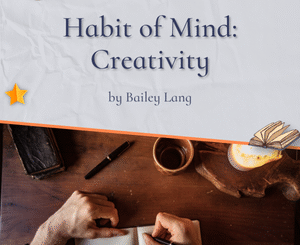Your Job Description by Kay Keppler
 Let’s welcome back monthly columnist, editor and novelist Kay Keppler, as she shares with us about “Your Job Description.” Enjoy!
Let’s welcome back monthly columnist, editor and novelist Kay Keppler, as she shares with us about “Your Job Description.” Enjoy!
***
I recently had the opportunity to do a beta read on a novel and provide a critique. The experience was both sad and depressing. Everything was off—pacing, character development, and conflict. Keeping all those ponies in harness pulling their weight and working together is complicated. But this is your job as a novelist.
Chuck Wendig once wrote a post called “A Smattering Of Stupid Writer Tricks,” which is succinct and helpful in reminding oneself of what needs to be done every day. A warning: I’ve taken liberties.
1) To improve pacing
Follow tension with calm. Take the story from high intensity (action, argument, manifest tension, drama) to low intensity (dialogue, simmering tension, concerted character development). However, nothing should be without tension, and conflict should carry throughout. Watch movies to see how this works. The films Die Hard and Requiem for a Dream have a period of calm, then a period of action, then calm, then action. But as these films approach the end, the slower periods get shorter and less frequent, and the sharp, fast, nasty patches get sharper, faster, and nastier. This is how you want your book to go, too.
Chart your story. Use graphs. Give a number (1-100) to a particular aspect of the story (tension, drama, character development, pacing, physical/social/emotional elements). Use spreadsheets to create the graphs. What does the chart look like? Fix what looks flat.
Assess your work. At the end of the day, ask yourself: Was I bored today by the work? If so: why? Then fix it.
Differentiate writer’s block from writer’s error. If you can’t seem to find your way forward, skip the section you’re working on and begin somewhere else. You don’t have to work in order. However, writer’s block might mean that something is wrong in the story. You might need to cut the last section because something is off-kilter. Maybe go back and outline the chapter or section to see what the story should look like.
Edit ruthlessly. Cut the first chapter of your book. Cut the first paragraph of a chapter. Cut the first sentence of a paragraph. Tighten everywhere. Tell as little story as possible to get the point across and ensure that readers feel something about it and think about it after they’re done.
2) To improve conflict
Determine the stakes. Ask yourself: What was the conflict; what were the stakes?
Challenge yourself and your characters. Ask yourself: Why do I care? What about this engages me? Why will it engage others?
Focus on essential actions. Think about your book (or chapter or scene) like this: something happens, things worsen, then get complicated, something twists, and maybe the something gets fixed.
Find the kernel. Ask yourself: What is this story about? Answer that question with one sentence only. Not, “what’s the plot,” but what are you trying to say with this story? Write your answer on a Post-It note and stick it on your monitor. Look at it daily as you write.
Try something new. Ask yourself: What if I do something different? Sometimes your story has to turn sharply in another direction. Blindside the characters. Blindside yourself. Blindside the readers.
3) To improve character development
Start when your character’s life changes. Ask yourself: Why does this story happen right now? What events lead to it? What matters about this moment in time that the story has to play out this way?
Assign your character desires and needs. Something or someone stands in her way. Your character is tested on how far she’ll go (and what she’ll do) to accomplish her goals.
Give your character agency. Ask yourself: Did your protagonist push on the story more than it pulled on him? Is he a paper boat on the river, or is he the river? (He should be the river.)
Remember, probably no one gets everything right in the first draft. That’s what revision is for. But if you keep the basic elements of pacing, conflict, and character development in mind, you’re a lot more likely to keep readers engaged and happy.
***
ABOUT THE AUTHOR
Kay Keppler is an author Zero Gravity Outcasts, Betting on Hope, Gargoyle: Three Enchanting Romance Novellas, and editor of fiction and nonfiction –Angel’s Kiss and Outsource It! She lives in northern California. Contact her here at Writer’s Fun Zone in the comments below, or at kaykeppler@yahoo.com to ask questions, suggest topics, or if you prefer, complain.
is an author Zero Gravity Outcasts, Betting on Hope, Gargoyle: Three Enchanting Romance Novellas, and editor of fiction and nonfiction –Angel’s Kiss and Outsource It! She lives in northern California. Contact her here at Writer’s Fun Zone in the comments below, or at kaykeppler@yahoo.com to ask questions, suggest topics, or if you prefer, complain.






